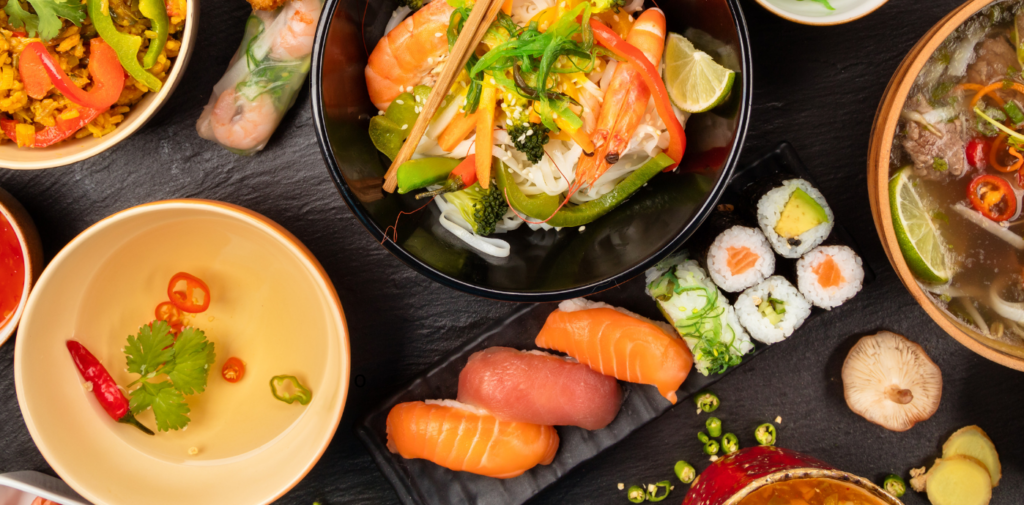
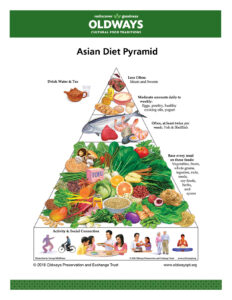 May is wonderful for many reasons: flowers are in full bloom, the weather is warming up, and we have special reasons to highlight not one but two of our heritage diets.
May is wonderful for many reasons: flowers are in full bloom, the weather is warming up, and we have special reasons to highlight not one but two of our heritage diets.
Though any Oldways heritage diet can (and should!) be followed year-round, May is both Mediterranean Diet Month and Asian American and Pacific Islander Heritage Month. If you’re looking to lunch like you’re in the Mediterranean, check out our last blog post; this time, it’s all about what we have to learn from the Asian Heritage Diet.
Asian diets are as varied as the Asian continent is large. Although each Asian country and region has its distinct flavors and cooking styles, there are many unifying characteristics that make up the Asian Heritage Diet Pyramid, including these five tips:
1. Eat mindfully. In traditional Asian cultures, people enjoy their food with gratitude, rather than multitasking, stuffing themselves, or counting calories. Make mealtime a happy time by being present, savoring the flavors, and honoring your body’s natural hunger and fullness cues.
This can also mean sharing meals with loved ones! Put away your phone; turn off the TV and computer. Every meal is an opportunity to bond with friends and family and to enjoy good food, companionship, and shared experiences. Try out some dishes that will initiate conversation, such as these flavorful lemongrass and basil mussels.
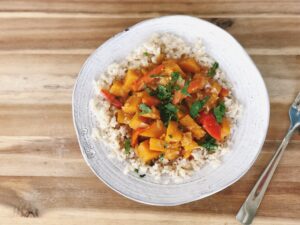 2. Make vegetables the star, not the supporting actor. Though sauces and seasonings vary, Asian diets all have one thing in common—lots of vegetables at each meal. In fact, fully vegetarian traditions are strong in many Asian countries, with pulses, whole grains such as millet and barley, soy sauce, fermented fish sauce, and various spicy condiments all thrown into the mix.
2. Make vegetables the star, not the supporting actor. Though sauces and seasonings vary, Asian diets all have one thing in common—lots of vegetables at each meal. In fact, fully vegetarian traditions are strong in many Asian countries, with pulses, whole grains such as millet and barley, soy sauce, fermented fish sauce, and various spicy condiments all thrown into the mix.
This red curry recipe truly allows vegetables to shine. It incorporates brown rice and kabocha squash, sometimes called Japanese squash, which has a vaguely sweet flavor and vibrant color. However, heritage diets are meant to be both delicious and accessible, so if you are unable to find this squash or prefer other squash such as butternut or acorn, they are just as healthy.
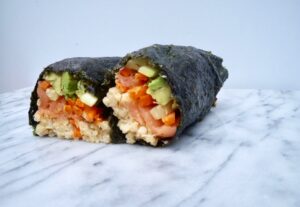 3. Use meat as a garnish. Because meat was traditionally very expensive, it is consumed in very small portions per meal—just enough to provide a boost of protein and flavor. Fish and seafood, however, are more commonly eaten than meat in many coastal communities and are great sources of heart- and brain-healthy omega-3s.
3. Use meat as a garnish. Because meat was traditionally very expensive, it is consumed in very small portions per meal—just enough to provide a boost of protein and flavor. Fish and seafood, however, are more commonly eaten than meat in many coastal communities and are great sources of heart- and brain-healthy omega-3s.
Not only that, but eating enough fish and seafood can also help keep your skin, eyes and bones healthy, and there are many ways to incorporate it into affordable, convenient meals such as these millet nori wraps with smoked salmon. Smoked salmon, which is often more accessible than sushi-grade raw fish, makes this recipe even more user-friendly
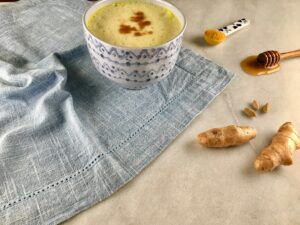 4. Drink tea and water. Science has shown many health benefits of tea, especially green tea, such as lower risk of obesity and chronic disease. For the biggest nutrition boost, pass on any added cream or sugar.
4. Drink tea and water. Science has shown many health benefits of tea, especially green tea, such as lower risk of obesity and chronic disease. For the biggest nutrition boost, pass on any added cream or sugar.
Additionally, tea can be used in other recipes. Try using matcha green tea powder when baking to add an earthy flavor and beautiful green coloring. When it comes to cooking, give this recipe – whole wheat peanut noodles with turmeric tofu – a try. Peanut butter, tea, vinegar and ginger come together with other ingredients to create this flavorful comfort food!
5. Be physically active. A healthy lifestyle is about more than just food. Traditional Asian exercises such as Tai Chi, Qigong, or yoga offer physical activity for building strength, flexibility, and other health benefits. However, the most important thing when it comes to exercise is finding something you enjoy and can do regularly!
Keep in mind, these are only a few ways to improve your health based on the Asian Heritage Diet. For more information, check out our Welcome to the Asian Heritage Diet brochure, and find more Asian Heritage recipes on our site.






Leave a comment